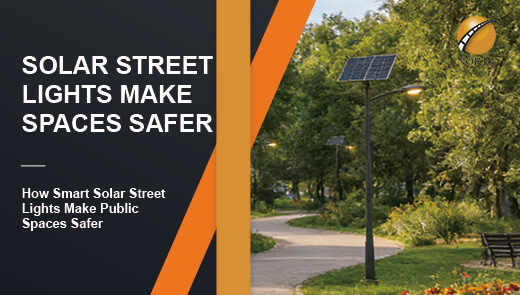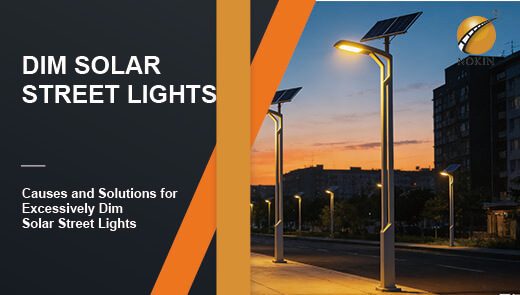Solar Street Lights: Enhancing Community Life & Safety
Whenever you stroll down a brightly lit street at night, enjoying the pleasures of nocturnal life, you may think that street lights come on naturally when it gets dark. But what you may not realize is that in remote areas of the vast developing world, energy and lighting issues are like heavy shackles, severely constraining the development of communities for whom a brightly lit street is almost a luxury. Fortunately, with the popularization of off-grid solar street lights, people in these areas can also see the light at night, bright roads have greatly improved the safety of remote communities traveling at night, the emergence of solar streetlights for them to pave a bright road to improve the quality of life.
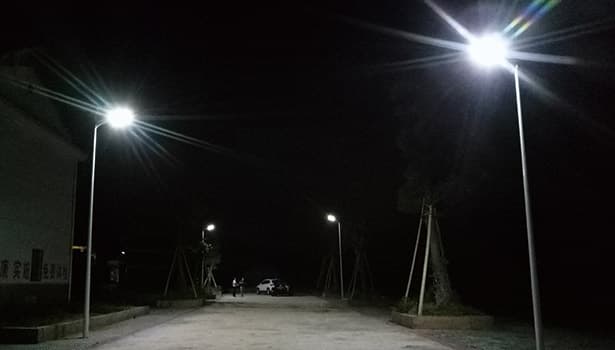
The Growing Need for Sustainable Energy in Rural Communities
In remote communities in developing countries, energy supplies have long been strained. As populations grow and communities develop, traditional methods of energy supply are unable to meet the increasing demand for energy. Residents are often unable to secure basic electricity needs such as lighting and small electrical appliances, let alone support further economic development in their communities.
Traditional energy solutions, such as diesel generator sets and kerosene lamps, are becoming more and more problematic. Not only are these sources of energy costly and financially burdensome to residents over the long term, but they are also extremely damaging to the environment. The emissions from burning fossil fuels aggravate air pollution and affect the health of residents; at the same time, the unsustainability of fossil fuels makes it difficult to maintain the stability of energy supply. Against the backdrop of global advocacy for green and sustainable development, the desire for clean energy in remote communities is growing stronger.
In addition, social progress has prompted remote communities to seek more sustainable energy sources. The development of public services, such as education and healthcare, has placed higher demands on stable energy supply. For example, schools need adequate lighting at night for students to study, and medical institutions need stable power to ensure equipment operation and patient care. These needs are driving remote communities to actively explore sustainable energy sources, creating a wide space for the application of clean energy products such as solar street lights.
How Solar Street Lights Work?
Solar powered led street lights operate based on advanced energy conversion technology. Its core component, the photovoltaic panel, can efficiently utilize sunlight to generate electricity. Under sunlight irradiation, the solar cells, like hardworking “little bees”, continuously absorb sunlight and store it as electricity.
The entire system consists of solar panels, batteries for energy storage, charge controllers and LED lights that are perfectly integrated. The solar panel is responsible for collecting light energy, the battery stores electricity, and the charge controller rationally regulates the charging process to ensure efficient utilization of electricity. The LED lamps act as light-emitting terminals, converting the stored energy into a constant and efficient brightness at night.
The biggest difference with the traditional lighting system is that the solar street light does not need to be connected to the power grid, which enables it to make a big difference in remote areas with limited or no power supply. In addition, the system is stable and requires little to no ongoing maintenance, and can operate consistently in both hot and cold temperatures, making it an ideal lighting solution for remote rural communities.
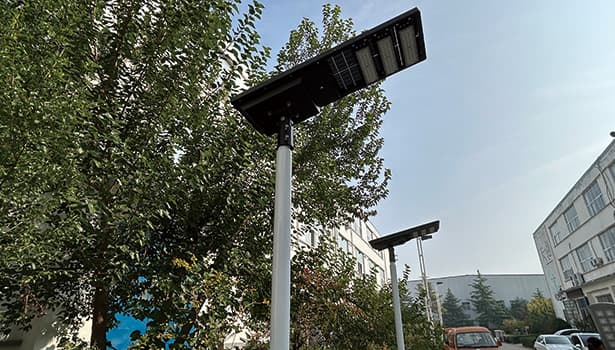
The Impact of Solar Street Lights on Community Development
All-round Upgrade of Safety and Security
In many remote communities, dark nights become a breeding ground for crime. Streets without lighting make it easy for criminals to hide, and cases of theft and robbery are frequent. The emergence of sustainable solar street lights has changed this situation. Some data show that after the installation of solar street lights in a remote village in Africa, the community security situation has been significantly improved. According to local police statistics, the night crime rate dropped by 40%, bright streets so that criminals do not dare to easily commit crimes, the residents' sense of security has increased dramatically.
Road safety has also been significantly improved by sustainable solar street lights. In some remote areas with complicated terrain and rugged mountain roads, traveling at night is full of dangers. When there is no lighting, it is difficult for drivers to see the road conditions, and traffic accidents happen from time to time. After the solar LED street light illuminates the road, the driver can find obstacles, curves and other road conditions in advance, greatly reducing the probability of accidents. A mountainous region in Southeast Asia, after the installation of solar street lights, the region's nighttime traffic accident rate decreased by 35%, guarding the travel safety of residents.
In case of emergency, solar street lights play an irreplaceable role. When natural disasters or accidents lead to power outages, conventional lighting into the dark, while the solar street lamps can still stand firm. In remote coastal communities hit by typhoons, solar streetlights guide the way for rescuers, helping them quickly arrive at the affected area and help injured people in time, buying valuable time for rescue and relief work.
Significantly Improved Social Environment
Solar street lights open the door to a new world for children in the community. In the absence of solar streetlights, children could only stay at home when it was dark, and their learning and recreational activities were greatly restricted. Now, with bright streetlights, community squares, school playgrounds and other places have become safe at night. Children can read and play games under the streetlights after school, enriching their after-school life.
A well-lit environment has also become a catalyst for community economic development. In some remote communities where agricultural products are mainly traded, night bazaars have gradually sprung up after the installation of solar street lights. Traders can set up stalls to sell agricultural products at night, attracting residents from neighboring areas to come to purchase, extending trading hours and greatly increasing the volume of transactions. In addition, the brighter streets have attracted more small businesses and merchants, promoting the diversification of commerce, creating more employment opportunities for the community, and raising the income level of residents.
Basic public services are also better protected by solar street lights. In the medical field, improved lighting at night allows healthcare workers to make safer trips to the clinic and provide timely treatment to sick residents. In the field of education, schools can conduct more activities at night, such as adult evening classes and cultural lectures, to enhance residents' cultural literacy and enrich the spiritual and cultural life of the community.
Community Cohesion And Sense of Responsibility Increased
The implementation of the sustainable solar street light project has made the community residents the real masters of community development. During the installation process, many residents took the initiative to participate, helping to carry materials and assisting in the installation; in the latter part of the maintenance, people spontaneously formed a maintenance group to regularly check the operation of the street lights. This process of joint participation has given residents a common goal and responsibility, increased communication and cooperation among them, and a closer relationship.
In a remote town in South America, a sustainable solar street light installation project has become a bond that unites the community. They work together to complete the installation and maintenance of the streetlights and witness the changes in the community together. The residents' sense of identity and belonging to the community has been growing, and they have developed a strong sense of pride and ownership of the local development plan, and have become more actively involved in other community construction projects.
Helping to Realize the United Nations Sustainable Development Goals
The promotion and application of solar street lights is highly compatible with the United Nations Sustainable Development Goals. In terms of Goal 7 (Affordable and Clean Energy), solar streetlights provide a clean and affordable energy solution for remote communities, allowing residents to no longer rely on expensive traditional energy sources, reducing energy costs and improving access to energy.
On Goal 11 (Sustainable Cities and Communities), sustainable solar street lights enhance the safety, livability and sustainability of communities by improving their lighting. It promotes community economic development, safeguards basic public services, enhances community cohesion, and promotes the development of remote communities in a sustainable direction, contributing to the realization of the global sustainable development goals.
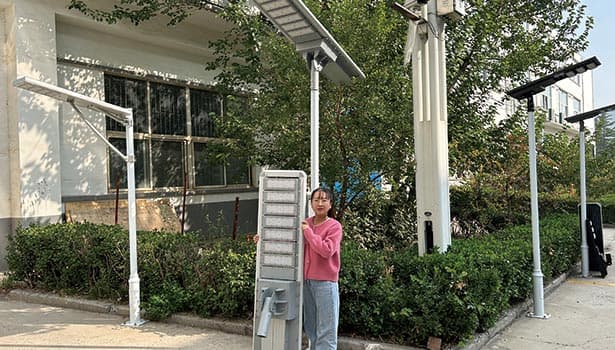
Solar LED Street Lights vs. Traditional Lighting Solutions
Energy Efficiency
LED street light is far more efficient than traditional light bulbs in energy conversion, traditional incandescent lamps convert electricity into light energy with an efficiency of only about 10%, while LED street lights can convert more than 80% of the electricity into light energy, which greatly reduces the waste of energy. Combined with solar power, the solar LED street light system realizes self-sufficiency in energy. Take a remote community with 50 streetlights as an example, if traditional street lights are used, the monthly power consumption is about 1,500 kWh, while solar LED street lights rely on light energy to generate electricity and consume almost no additional power, which effectively alleviates the energy constraints in remote areas.
Cost Effectiveness
Although the initial procurement and installation cost of solar street light is about 2 - 3 times of traditional street light, it is very economical in the long run. Traditional street lights rely on grid power supply, long-term electricity expenditure is high, to 500 yuan per street light per year, 50 street lights a year electricity costs amounted to 25,000 yuan.
On the other hand, solar street lights do not need to pay electricity bills, and the savings in electricity costs in 5-8 years can completely offset the initial investment. In addition, solar street lamps have a long service life and low maintenance costs, while traditional street lamps have frequent bulb replacements, plus line maintenance costs, which is a considerable expense in the long run, compared to solar street lamps, which are more favored by investors and communities.
Environmental Impact
If traditional street lights are powered by fossil fuels, every 1 ton of standard coal burned will produce about 2.6 tons of carbon dioxide, 8 kg of sulfur dioxide, and 7 kg of nitrogen oxides, causing serious pollution to the air and water bodies. Solar streetlights, on the other hand, use sunlight as energy source, with zero carbon emission and no harmful gas emission during the whole operation process.
In a community where 100 solar street lights are installed, carbon dioxide emissions can be reduced by about 15 tons per year, which is equivalent to the carbon absorption of planting 800 trees, effectively helping to improve the ecological environment in remote areas, guarding the health of residents, and practicing the concept of green development.
Reliability
Installation of traditional streetlights in remote areas requires laying cables and other complex projects, and in the process of using them, the power supply is often unstable due to power outages or circuit failures, and the traditional streetlights are unable to realize continuous illumination, which brings a lot of inconvenience to the residents' lives.
Solar LED street lights operate independently of the power grid, and as long as they can receive sunlight, they can continue to generate and store energy. When encountering windy or snowy weather, traditional circuits are prone to failure, resulting in the street light not being able to operate normally, while the solar street light is still able to stabilize the lighting with the power stored in the previous period. Even in the case of continuous rainy weather, the energy storage system of modern solar powered street lights can ensure continuous power supply for 3 - 5 days, providing residents with reliable night lighting.
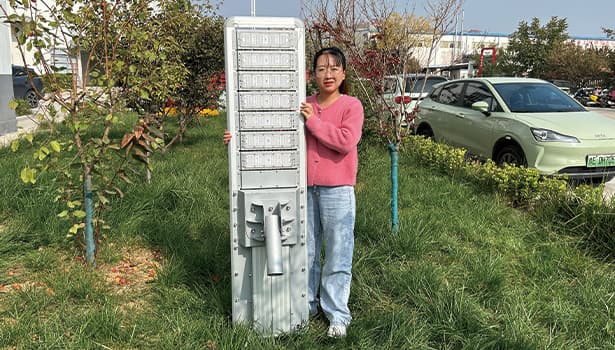
Challenges and Responses to Installing Solar Street Lights
Logistics Challenges
In remote communities, often due to traffic or environmental issues, it poses a great challenge to logistics and transportation. Being able to transport solar street lights to the installation site is not a simple matter, so solar street light manufacturers and installation teams need to plan ahead and fully consider the difficulties during transportation to ensure that the resources can arrive without any problems.
Insufficient Technical Expertise
Rural areas often lack specialized technical skills, which makes solar street lights installation difficult. The key to solving this problem is to conduct training programs to train local installation and maintenance personnel to ensure that the streetlights can operate stably in the long term.
Community Resistance
Because there is less awareness of sustainable energy, some communities may be resistant to new technologies such as solar street lights. In this case, the project leader needs to actively communicate with the community, publicize the advantages of solar LED street lights in detail, and patiently answer the concerns of the residents, so as to win the community's support for the installation work.
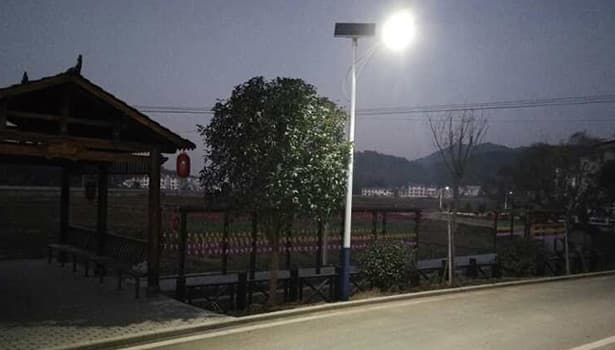
Embrace the Future with Solar Street Lights
With its many advantages of cleanliness, high efficiency and environmental protection, solar powered LED street lights have brought all-round changes to remote communities, significantly improving the quality of life of residents. From ensuring safety to promoting economic development, from protecting the environment to enhancing community cohesion, the value of solar street lights speaks for itself.
Today, it's time for governments, non-governmental organizations, the public sector and the private sector to act together to increase investment in solar street light technology. Together, we should light up every community with clean energy, not only as a critical step towards sustainable development, but also as a path to social justice and a prosperous tomorrow.

